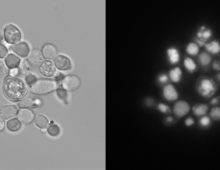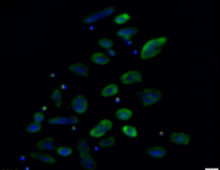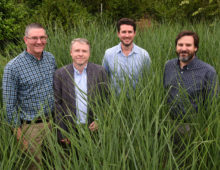The Berkeley Lab Biosciences Area Entrepreneurship Program presents… Eyes on the Prize – Launching & Sustaining Startups in Synthetic Biology Who’s Invited? All Berkeley Lab Employees and Affiliates. When: August 29th, 3:00 pm – 5:30 pm 3:00 pm – 4:15 pm: Panel discussion, Q&A followed by: 4:15 pm – 5:30 pm: Hosted Hoppy Hour @…
JGI User Executive Committee charter
The JGI User Executive Committee (UEC) represents the JGI user community and is responsible for providing input and advice on JGI policies and practices that affect users and their science including technical capabilities offered, proposal review procedures, and the annual user meeting. The UEC also acts as a liaison to the user community and the…
Learning to Look
Machine learning approach significantly expands inovirus diversity. To answer the question, “Where’s Waldo?” readers need to look for a number of distinguishing features. Several characters may be spotted with a striped scarf, striped hat, round-rimmed glasses, or a cane, but only Waldo will have all of these features. As described July 22, 2019, in Nature…
Improving the Cacao Genome and Phytozome
According to the International Cocoa Organization (ICCO), global cocoa bean production in 2017-2018 was 4.6 million metric tons. The global chocolate brands couldn’t exist without cocoa. But today the plant is under threat due to climate change and devastating fungal infections. That’s why Mars, Inc., a maker of chocolate for more than 100 years and…
Better Genome Editing for Bioenergy
A team has optimized a crucial part of CRISPR-Cas9 technology to enable improvements in microbial oil production. The Science CRISPR-Cas9 is a powerful, high-throughput gene-editing tool that can help scientists engineer organisms for bioenergy applications. Cas9 needs guide RNA to lead it to the correct sequence to snip — but not all guides are effective….
Cultivating Symbiotic Antarctic Microbes
Nanohaloarchaeota cultures reveal they are symbionts and not free-living organisms. The Science Researchers employed multiple microbiology and ‘omics techniques to experimentally determine that Nanohaloarchaeota are symbionts, rather than free-living organisms as had been originally thought. The Impact The Antarctic lakes are a “treasure trove” of unknown microbes that play critical roles in environmental processes (related…
Developing Switchgrass for Biomass Production
Switchgrass community gardens help distinguish genetic bases of fitness traits from climactic influence. The Science To better understand the genetic basis of local adaptation, researchers established community gardens of switchgrass plants in 10 different field sites on a north-south gradient across the United States. Hundreds of the switchgrass plants in these gardens are clonally propagated…
Tracking Permafrost Thaw
Notes from the JGI 2019 User Meeting The Arctic peatlands are among the northern ecosystems that collectively store up to half of the planet’s soil carbon. With the frozen peatlands thawing, said Virginia Rich of The Ohio State University, “if we project this out, permafrost is virtually eliminated by the end of the century.” Just…
Engaging the Workforce through Tiny Earth
Notes from the JGI 2019 User Meeting Amanda Hurley, a postdoctoral fellow in Jo Handelsman’s lab at the University of Wisconsin–Madison, began her talk with a reminder that pathogens damage 16% of the global crop yield. That number is expected to rise due to climate change. “We need something that tips the scales back in…
JGI Early Career Researchers Featured in mSystems Special Issue
In a special issue of mSystems, out May 14, 2019, JGI researchers are among the authors who offer perspectives on what the next five years of innovation could look like. In one article, Micro-Scale Applications head Rex Malmstrom and Metagenome Program head Emiley Eloe-Fadrosh outline more targeted approaches to reconstruct individual microbes in an environmental…








